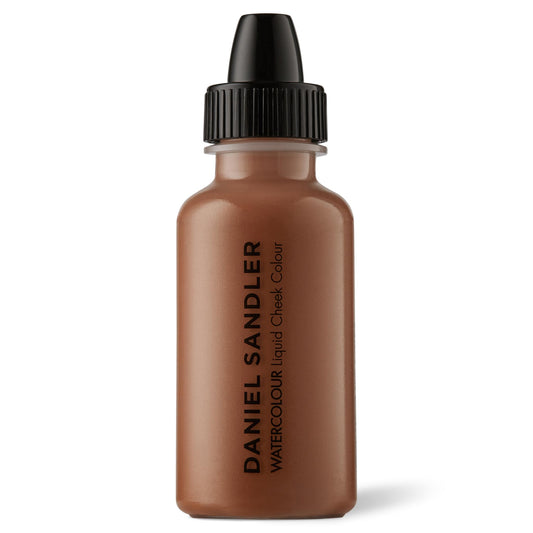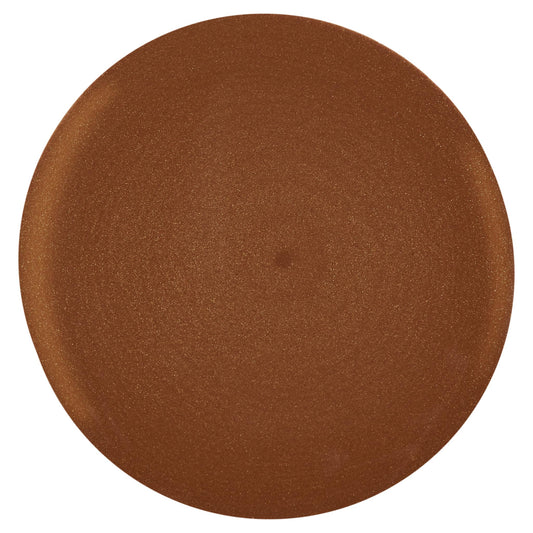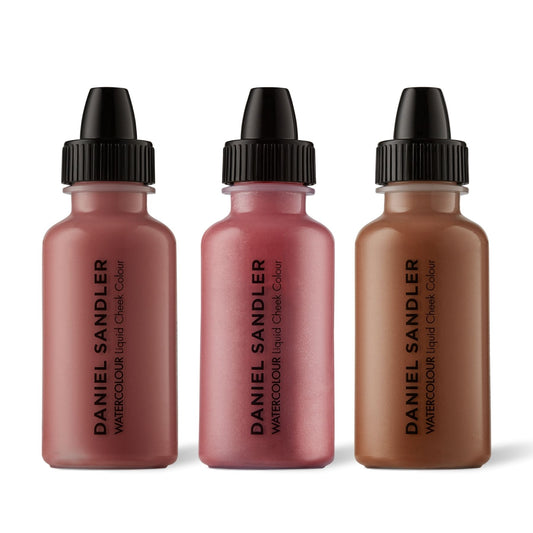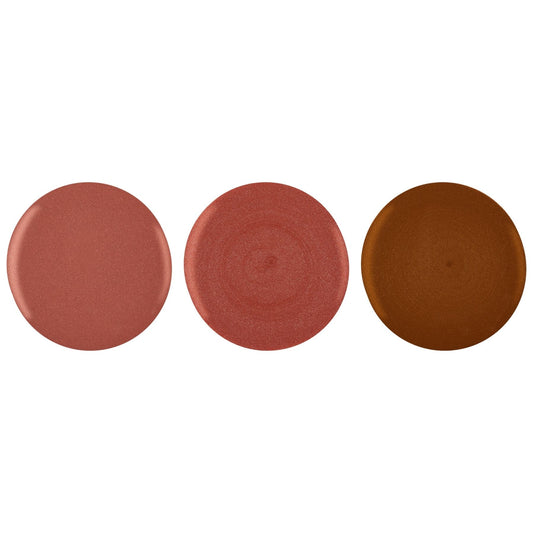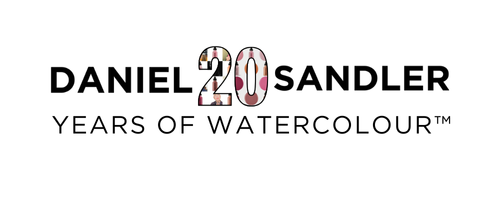THE INGREDIENTS FOR OUR BEAUTY PRODUCTS
Ingredients lists for all of our products are provided on each product page. For more information on the ingredients we use and why, take a look at the full ingredients list below.
Jump to ingredient:
| 2-Octyl-1-Dodecanol |
|---|
| An anti-blooming agent. |
| Aloe Barbadensis |
| Improves the appearance of dry or damaged skin by reducing flaking and restoring suppleness. |
| Alumina |
| Alumina, also known as aluminum oxide, is an inorganic compound consisting of oxygen and aluminum. In cosmetic and personal care products, it is used in cleansing products, lipsticks, blushers and other products. Alumina is used in cosmetic and personal care products as an abrasive, anti-caking agent, anti-bulking agent and as an absorbent. |
| Aluminum Borosilicate |
| A shimmering powder composed of very tiny flakes of shiny compounds. Frequently used in makeup, they give the skin a gorgeous glow. |
| Aluminum Hydroxide |
| Acts as a skin protectant and opacifying (reduction of a clear/transparent appearance) agent in cosmetics. It's used in an array of products including foundation, lipstick and moisturiser. Many sunscreens use aluminum hydroxide as a coating for titanium dioxide- it prevents it from clumping and allows for an even application. Rather than penetrating the skin, it forms a refractive layer that helps reflect UV rays away from the skin. In fact, an aluminum coating is recommended in the Guidelines for Natural Cosmetics of the BDIH. |
| Ascorbyl Palmitate |
| A stable, oil-soluble form of Vitamin C. Acts as an anti-oxidant. |
| Benzyl Alcohol |
| Cosmetic manufacturers frequently use this ingredient for a variety purposes. It primarily works as a preservative, chelator and stabiliser, but has also been shown to enhance the foaming and cleaning capabilities of a cosmetic solution. As a metal chelator (bonding agent), it counteracts the adverse effects of hard water by binding with heavy metal ions contained in tap water, which in turn prevents the metals from being deposited onto the skin, hair and scalp. This makes it a particularly useful ingredient for rinse-off products that inherently require water to come into contact with the skin. Essentially, this ingredient deactivates the metal ions through bonding with them, which in turn prevents cosmetic products from deteriorating, maintains its clarity and prevents it from smelling rancid. You can find this ingredient in virtually every personal care product including facial moisturizer/lotion, sunscreen, anti-aging treatment, cleanser, shampoo/conditioner, hair dye, body wash and eye cream. |
| Butylene Glycol |
| Butylene glycol is added to all kinds of products that you apply topically. It’s particularly popular in clear gel-based products and in makeup that glides onto your face. |
| C18-38 Alkyl Hydroxystearoyl Stearate |
| Is an emollient, emulsion stabiliser and controls viscosity. |
| Calcium |
| Helps with replenishing the calcium lost in the skin due to ageing. |
| Calendula Officinalis Flower Extract |
| Calendula is known for its healing properties and its anti-inflammatory and antiseptic properties. In cosmetics, the calendula flower is used for its soothing properties as well as for its anti-irritation effects. |
| Caprylic/ Capric Triglyceride |
| Derived from coconut oil and glycerin, it's considered an excellent emollient and skin-replenishing ingredient. It's included in cosmetics due to its mix of fatty acids that skin can use to replenish its surface and resist moisture loss. |
| Caprylyl Glycol |
| A skin conditioning agent that lends moisturization, emollience and wetting properties to many cosmetic solutions. It also functions as a stabilizer and has been shown to increase the antimicrobial activity of other preservatives. |
| Carmine CI 75470 |
| Is an aluminum and calcium salt of carminic acid. It is one of the most ancient natural dyes, derived from the shells of the female insect Coccus Cacti. It is commonly used to achieve bright reds and pinks in lipsticks. Coal tar based colourants, the synthetic alternatives to Carmine, can irritate lips, dry lips out and thus are very problematic. |
| Cera Alba (Beeswax) |
| Beeswax is a natural wax produced in the bee hive of honey bees of the genus Apis. It has skin protecting properties and helps to relieve chapped skin, and has been found to be superior to Petroleum based barrier creams. Beeswax is not absorbed by the skin and thus creates a protective barrier for the skin and lips, retaining moisture in those areas. Completely non-toxic, beeswax is also known for its healing properties. Used for skin protection, moisture retention and its healing properties. |
| Cera Microcristallina (Microcrystalline Wax) |
| A hydrocarbon wax derived from petroleum. Used as a thickener to give products a semi-solid/cream texture. |
| Cetyl PEG/PPG-10/1 Dimethicone |
| A conditioning agent, emulsifier and delivery agent. As a silicone it provides emolliency, water binding properties, good slip and a silky touch on the skin. It keeps the water and oil parts of an emulsion from separating, and possesses great trapping capacity that enables it to prolong the release of active molecules, particularly pigmented ones. It also conditions the skin, gives it a smooth and soft look and eliminates any tackiness. |
| Chromium Oxide Green CI 77288 |
| Imparts a colour to cosmetics and personal care products. |
| CI 15850 Red 6 Lake |
| Red 6 and Red 7 and lakes of these colours may be used alone or in combination with other colours to colour cosmetics and personal care products. |
| CI 15850 Red 7 Lake |
| Red 6 and Red 7 and lakes of these colours may be used alone or in combination with other colours to colour cosmetics and personal care products. |
| CI 19140 Yellow 5 Lake |
| Yellow 5 and Yellow 5 Lake are used to impart colour to cosmetics and personal care products. |
| CI 77491 Iron Oxides |
| Iron Oxides (CI 77489, CI 77491, CI 77492, CI 77499) — Three basic shades: black, yellow and red. Iron oxides are found in a wide array of cosmetic products from eye shadow to talcum powder because they’re safe, although the iron oxide in cosmetics is made synthetically. Iron oxides are made in a lab for safety reasons since naturally produced varieties often contain impurities. |
| CI 77492 Iron Oxides |
| Iron Oxides (CI 77489, CI 77491, CI 77492, CI 77499) — Three basic shades: black, yellow and red. Iron oxides are found in a wide array of cosmetic products from eye shadow to talcum powder because they’re safe, although the iron oxide in cosmetics is made synthetically. Iron oxides are made in a lab for safety reasons since naturally produced varieties often contain impurities. |
| CI 77499 Iron Oxides |
| Iron Oxides (CI 77489, CI 77491, CI 77492, CI 77499) — Three basic shades: black, yellow and red. Iron oxides are found in a wide array of cosmetic products from eye shadow to talcum powder because they’re safe, although the iron oxide in cosmetics is made synthetically. Iron oxides are made in a lab for safety reasons since naturally produced varieties often contain impurities. |
| CI 77891 Titanium Dioxide |
| Titanium dioxide, also known as titanium(IV) oxide or titania, is the naturally occurring oxide of titanium. It is the most widely used white pigment because of its brightness and very high refractive index. Titanium dioxide is found in almost every sunscreen with a physical blocker because of its high refractive index, its strong UV light absorbing capabilities and its resistance to discolouration under ultraviolet light. This advantage enhances its stability and ability to protect the skin from ultraviolet light. |
| Cyclopentasiloxane |
| Cyclopentasiloxane is a silicone regularly used in cosmetic products. It’s commonly found in medical implants, sealants, lubricants, and windshield coatings. D5 is colourless, odourless, non-greasy, and water-thin. It doesn’t get absorbed into the skin. Rather, it evaporates quickly away from it. This property makes it a useful ingredient in cosmetic products that need to dry quickly. It also has lubricating properties. This gives a slippery and silky feeling when applied to the skin and hair and allows the product to spread more easily. |
| Dicaprylyl Carbonate |
| A skin conditioner and emollient that works by providing a protective film and enhancing the skin's lipid layer, making it feel soft and smooth without leaving a greasy residue behind. It has excellent spreadability, and leaves a dry, velvety feel to the skin similar to how a silicone would. |
| Dimethicone |
| Works as an anti-foaming agent, skin protectant and skin & hair conditioner- it prevents water loss by forming a hydrating barrier on the skin. Like most silicones, this ingredient has a unique fluidity that makes it easily spreadable. When applied to the skin, it's known for creating a subtle gloss that feels smooth and silky to touch. It also acts a mild water repellent by forming a protective barrier on the skin, and can fill in fine lines/wrinkles on the face, giving it a temporary “plump” look. |
| Dimethicone/ Vinyl Dimethicone Crosspolymer |
| In cosmetics and personal care products, Dimethicone Crosspolymer, Dimethicone Vinyl/Dimethicone Crosspolymer and Vinyl Dimethicone/Methicone Silsesquioxane Crosspolymer all function as viscosity increasing agents - nonaqueous. Dimethicone Crosspolymer also functions as a dispersing agent - nonsurfactant, an emulsion stabilizer and a hair fixative. |
| Disodium Edta |
| Essentially, this ingredient deactivates the metal ions through bonding with them, which in turn prevents cosmetic products from deteriorating, maintains its clarity and prevents it from smelling rancid. You can find this ingredient in virtually every personal care product including facial moisturiser/lotion, sunscreen, anti-aging treatment, cleanser, shampoo/conditioner, hair dye, body wash and eye cream. |
| Disteardimonium Hectorite |
| Disteardimonium Hectorite functions as a dispersing agent - nonsurfactant, provides great suspension for other ingredients that would otherwise sink. |
| Ethyl Hexyl(oxy)propane Diol |
| Is a skin conditioner. |
| Ethylhexyl Palmitate |
| Is a derivative of palm oil often used as an organic replacement to silicone. It has a 'dry-slip' feel that is very similar to silicone's texture. It is found in many skin care products as an ingredient used to adjust the consistency. |
| Ethylhexylglycerin |
| A natural preservative used as an alternative to parabens. Derived from glycerin and can also be used as a deodoriser and skin conditioner. |
| Euphorbia Cerifera (Candelilla) Wax |
| Candelilla wax is a natural emollient. It is therapeutically effective in treating inflammation of the skin, including acne and used widely as a non-toxic glazing agent to create a shiny appearance on citrus fruit, chocolate and lipsticks. |
| Glycerine |
| Glycerin is a colourless, odourless, viscous liquid which freezes to a gummy paste and has a high boiling point. Glycerin can be dissolved into water or alcohol, but not oils. On the other hand, many things will easily dissolve into glycerin, easier than they do into water or alcohol, so it is a good solvent. Glycerin is used in cosmetics and personal care products mainly to improve skin’s smoothness and moisture content. It is a humectant (attracts moisture to the skin), naturally emollient, and has a cooling effect on skin. |
| Glyceryl Behenate |
| Is a fat used in cosmetics as a viscosity-increasing agent in emulsions. It is used widely in cosmetics as non-comedogenic (non- pimple causing substance) ingredient. It does not clog the oil pores of facial skin. |
| Glyceryl Stearate |
| Is used as a skin conditioning agent - emollient and a surfactant - emulsifying agent in cosmetics and personal care products. Glyceryl Stearate is also used to stabilise a product, decrease water evaporation, make the product freeze-resistant, and keep it from forming surface crusts. |
| Helianthus Annuus Seed Cera (Helianthus Annuus (Sunflower) Seed Wax) |
| Extracted from Sunflower seeds. Used for enriching cosmetics with essential fatty acids and vitamins A, D and E. |
| Hexylene Glycol |
| Is a solvent and viscosity agent used in many skin care products. It is used to thin out heavy compositions and create a thinner, more spreadable product. |
| Hydroxylated Silicon Dioxide |
| Acts as a texturiser and soft focus and anti-caking agent, due to its free-roll-over property silica provides a luxurious feel, excellent tactile experience, and exceptional lubricity to loose and pressed powder products. It improves the fluidity of make-up powders and skin care products. |
| Isododecane |
| Synthetic hydrocarbon ingredient used as a solvent. Isododecane enhances the spreadability of products and has a weightless feel on skin. All hydrocarbons used in cosmetics help prevent the evaporation of water from skin. |
| Isopropyl Myristate |
| Is a synthetic oil used as an emollient, thickening agent, or lubricant in beauty products. |
| Isostearyl Isostearate |
| Is a fluid emollient for oils. It provides a rich feel and improves spreading on the skin. It is appropriate for use in lipsticks and as a binding agent for make-up powders. |
| Lonicera Caprifolium (Honeysuckle) Flower Extract |
| Honeysuckle flower extract is used primarily for its anti-inflammatory, anti-bacterial and calming properties and as a natural preservative booster. |
| Lonicera Japonica (Honeysuckle) Flower Extract |
| Honeysuckle extract is a natural, plant-based preservative that is strongly anti-bacterial and anti-viral. In place of artificial parabens, to prevent the growth of bacteria and mold. Honeysuckle extract also boasts rich antioxidant properties that help create a more safe and shelf-stable product that is anti-inflammatory and works hand-in-hand with other plant-based extracts and oils to soothe and calm irritated, inflamed skin. |
| Lysine |
| Is an amino acid. It acts as a building block for proteins. |
| Magnesium Aluminum Silicate |
| Stabilizes both oil-in-water and water-in-oil emulsions at low concentrations. Improves significantly skin feel. Can be used as a thickener. |
| Magnesium Chloride |
| Is a naturally occurring mineral derived from refined and purified clay that is used primarily as a thickener in cosmetics and beauty products. Magnesium Aluminum Silicate has unusually large molecules; because of these large molecules, it is unable to be absorbed into the skin. |
| Methicone |
| Is a silicone based polymer that is used as a skin conditioning agent and surface modifier in beauty products, cosmetics, and skin creams. It is primarily used to create a film or barrier for makeup to stick to. |
| Methyl Methacrylate Crosspolymer |
| Is used in beauty products and cosmetics as both an emollient and surfactant. |
| Mica CI 77019 |
| Mica is one of the most important naturally occurring mineral often used in makeup foundations. It adds sparkle and shimmer to the product and creates a glow effect. The suppliers we work with have their own mine to source mica in order to ensure full transparency along the supply chain and obtain mica from child-labour-free sources. |
| Neopentyl Glycol Diheptanoate |
| Is an emollient used in skin care products for its properties as a skin conditioning and viscosity increasing agent. |
| Paraffinum Liquidum (Mineral Oil) |
| Clear, odourless oil derived from petroleum that is widely used in cosmetics. Once it’s purified to become mineral oil USP (cosmetics- and pharmaceutical-grade mineral oil), it has no resemblance to the original petroleum and isn’t a source of contaminants. Cosmetics-grade mineral oil and petrolatum are considered the safest, most non-sensitizing moisturising ingredients ever found. |
| PEG-20 Methyl Glucose Sesquistearate |
| Is used in beauty products and cosmetics as both an emollient and surfactant. |
| Pentaerythrityl Tetra-DI-T-Butyl Hydroxyhydrocinnamate |
| This ingredient is an antioxidant, it has been found to serve as a preservative that creates a reaction of other ingredients and stabilises formulas. |
| Phenoxyethanol |
| Is a bactericide (that functions as a disinfectant, antiseptic or antibiotic) that is primarily used as a preservative in cosmetics and beauty products. It is also seen as a fragrance additive, a fixative for perfumes, an insect repellent ingredient in sunscreens, a topical antiseptic ingredient. |
| Polyethylene |
| Is often seen in formulas because of its ability to bond other ingredients together, a binding agent, thickener, film-forming agent and emulsion stabiliser. |
| Polymethyl Methacrylate |
| Functions as a film former. |
| Propylene Carbonate |
| Is used to dissolve other substances. |
| Propylene Glycol |
| Is primarily used in beauty products to improve freeze-thaw stabilise of emulsionsand can prevent a cream or lotion from developing a grainy, lumpy-like texture when exposed to low temperatures. It also has moisturising properties similar to glycerine more commonly used. |
| Prunus Amygdalus Dulcis (Sweet Almond) Oil |
| Acts as a lubricant on the skin surface, which gives the skin a soft and smooth appearance. |
| Red 22 Lake CI 45380 |
| Colouring agent. |
| Red 28 Lake CI 45410 |
| Colouring agent. |
| Red 36 CI 12085 |
| Colouring agent. |
| SD Alcohol 40-B |
| Denatured Alcohol is used in many personal care product types including makeup, lotions, fragrance, shaving, oral care, skin care and hair care products where it functions as an antifoaming agent, cosmetic astringent, solvent and viscosity decreasing agent. |
| Silica |
| Silica is seen in many make up formulas because its spherical particles not only absorb sweat and oil, but prevent light reflection, and improve spreadability. Silica is also used as an ingredient in powder perfume because the porous spheres can deliver fragrance over a long period of time. |
| Silica Dimethyl Silylate |
| Is a silica derivative used in cosmetics and personal care products as an anticaking agent, bulking agent, slip modifier, viscosity increasing agent, emollient, and most often as a suspending agent. |
| Simmondsia Chinensis (Jojoba) Seed Oil |
| Jojoba oil is the liquid wax ester produced in the seed of the jojoba (Simmondsia chinensis) plant, a shrub native to southern Arizona. Out of all of the compounds in nature, this wax ester is the most similar to human skin oil (sebum). It is predicted that applying jojoba to the skin can trick the skin into thinking it is producing enough oil, thus balancing oil production. It is a highly penetrative, very protective oil with excellent softening and moisturising properties, recommended for all skin types but particularly for the treatment of dry, mature or hardened skin. |
| Sodium Dehydroacetate |
| Is a preservative used in cosmetics and personal care products because of its antimicrobial properties. |
| Sodium Hyaluronate |
| Improves the appearance of dry or damaged skin by reducing flaking and restoring suppleness. |
| Sodium Lauroyl Glutamate |
| Leaves skin feeling smooth and soft. It's also non-irritant, non-allergic, non-comedogenic and is resistant to hard-water. |
| Stearic Acid |
| Used as emulsifiers, emollients and lubricants. |
| Sweet Almond Oil - Prunus Amygdalus Dulcis Oil |
| Sweet almond oil is clear in appearance, has a very mild sweet fragrance and is non-greasy, light and easily absorbed by the skin. It makes a fabulous moisturiser and skin softener for all skin types, also great for reducing irritation and itching. It is ultra-rich in protein and nutrients, such as Vitamin A, B1, B2, B6 and extremely rich in vitamin E & D, which all help to eliminate dark circles and to delay the ageing process by encouraging skin elasticity and preventing wrinkles and dark spots. |
| Talc |
| A mineral substance used in a variety of cosmetic products. It is added to absorb moisture, smooth or soften products, prevent caking, and make makeup opaque. |
| Tin Oxide |
| Is found in many shimmering products and is considered safe for use in cosmetics. |
| Tocopherol |
| A form of Vitamin E. Acts as an anti-oxidant. |
| Tocopheryl Acetate |
| Is a form of vitamin E, a natural skin-conditioning agent and antioxidant. It is the ester of acetic acid and tocopherol and is often used as an alternative to pure tocopherol (or undiluted vitamin E) because it is considered more stable and less acidic. |
| Tribehenin |
| It is used as skin-conditioning agent to provide emollient properties. |
| Triethanolamine |
| It is used as a buffering agent, masking and fragrance ingredient in addition to its primary use as a pH adjuster. It may assist in emulsion enabling water and oil-soluble ingredients to mix. |
| Triethoxycaprylylsilane |
| Is an emulsifier that prevents the oily and liquid parts of a formula from separating. It is also a binding agent. That means that it can bind pigments to form a stable coating. It allows pigments to disperse well on the skin too, ensuring an even coverage. |
| Trimethylsiloxysilicate |
| Is a highly cross-linked silicone resin primarily used for its film-forming attributes. It helps hold pigments in place while providing water-resistance in skin care and colour cosmetic applications. |
| Vinyl Dimethicone/ Methicone Silsesquioxane Crosspolymer |
| Function as viscosity increasing agents and as a dispersing agent - an emulsion stabiliser. |
| Vitamin E - Tocopherol Acetate |
| A stable form of vitamin E extracted from soybeans. Dermatologists recommend vitamin E for a large number of skin diseases and sensitivities and for its ability to help soothe and promote the health of the skin. Vitamin E works to soften skin and reduce the appearance of facial lines and wrinkles. A naturally occurring, fat-soluble antioxidant, it protects the skin against sun damage and reduces the appearance of fine lines, wrinkles and helps prevent the appearance of age spots. It also acts as a free radical scavenger (free radicals have been associated with skin cancer and premature skin aging due to sun exposure). Vitamin E Oil is an emollient which helps make the skin feel softer, smoother and reduces cracking and irritation. |
| Yellow 6 Lake CI 15985 |
| Yellow 6 and Yellow 6 Lake are used to impart colour to cosmetics and personal care products. |
